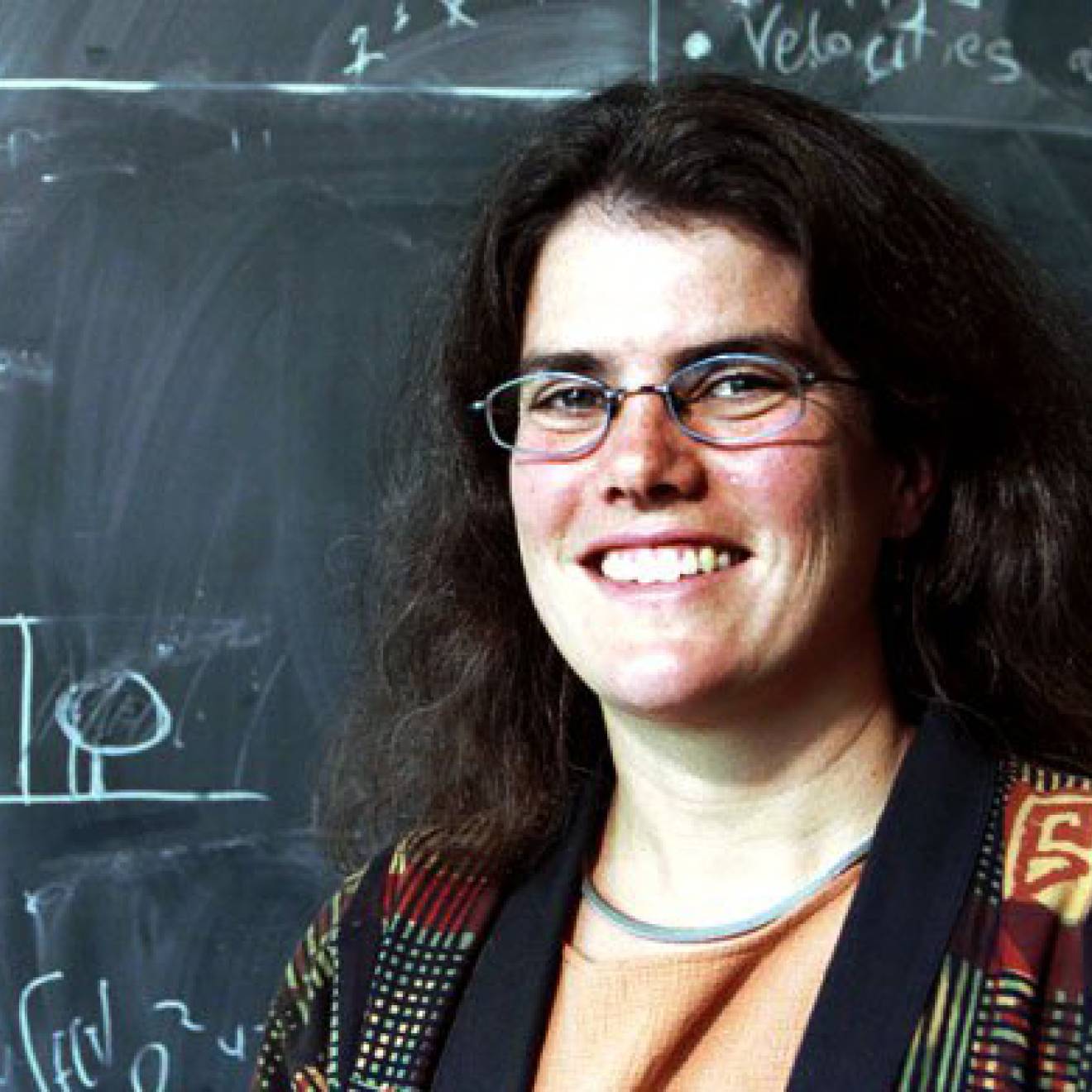Nicole Freeling, UC Newsroom
From the time Elizabeth Pierson was 7 and her parents came downstairs to find her in the kitchen mixing baking soda and vinegar — dressed in a raincoat, swimming goggles and rubber gloves — the UC Berkeley senior knew she wanted to be a scientist.
As a youngster, Pierson would accompany her father, the director of a science institute, to talks on astrobiology and astronomy, which "I didn't understand but was still totally excited by," she said. She dreamed of being a marine biologist and, later, of studying genetics. Ultimately, she chose a major in molecular biology with a concentration in human health.
In her sophomore year, Pierson, a dean's list student, discovered that although she loved the material, she didn't like being "cooped up" in a lab. Even so, "I probably would've stayed on the research track because I didn't have any other vision for myself." Then she received an email about courses that explored science through the lens of K-12 teaching. She hoped they might provide a fresh perspective. What she found was something much greater: a calling.
"I have a passion for service, but I didn't see where that could merge with my career," Pierson said. "When I actually got into the classroom, I realized how much of a social justice opportunity there is."
Pierson is among the first cohort of students to complete a pioneering program in California that enables majors in the so-called STEM fields — science, technology, engineering and mathematics — to become credentialed teachers at the same time they complete their undergraduate degree.
Available at UC Berkeley and UC Irvine, the expedited credentialing program is part of a systemwide program called CalTeach. Offered in varying ways at all nine undergraduate UC campuses, CalTeach aims to bring bright and motivated students with specialized knowledge in math and science disciplines into classrooms where they are desperately needed.
Rather than producing teachers who are qualified to teach the subjects — or, as is often the case, teachers credentialed in other subjects who are tapped to fill gaps in math and science — "We are producing mathematicians, scientists and engineers who have chosen to teach," said engineering professor George Johnson, who is co-director of Berkeley CalTeach.
Quality education in the STEM fields is viewed as critical to building a highly skilled workforce and to providing students with a foundation of knowledge that can enable their professional and academic success. Yet those disciplines often are the most poorly taught.
According to the Center for the Future of Teaching and Learning, math and science classes have the highest percentage of teachers who are teaching outside their field of expertise, and they also have the highest percentage of underprepared teachers — those who have not yet met the requirements for a preliminary credential. An estimated 30 to 40 percent of high school and middle school math and science teachers are under-prepared. The problem is particularly acute in urban schools with large populations of underrepresented minorities, creating a learning gap that can have lifelong consequences.
CalTeach was created in order to tap UC's leadership in STEM education and attract more of these students to the teaching profession. Specifics of CalTeach vary by campus, but all provide a curriculum that combines pedagogical training in each discipline with classroom experience and student teaching.
Since the program's launch in 2005, 5,400 UC students have participated in CalTeach. Between 2004-05 and 2009-10, the most recent year for which data are available, the number of math and science teaching credentials issued to UC baccalaureates increased 36 percent, according to the UC Office of the President.
One of the most important aspects of the program, said Shelly Seethaler, staff director of CalTeach at UC San Diego, is that it provides a low-stakes way for students in the STEM fields to give teaching a try — and, potentially, to get hooked.
"Science students have so many different options. If they major in, say, physics education, they may be seen as limiting themselves," said Seethaler, who notes that a total of six students are currently enrolled in the school's physics education and chemistry education majors, as compared with the approximately 250 students who participate in CalTeach annually.
At UC San Diego, CalTeach students can earn an undergraduate degree, credential and master's in education in the same amount of time it would normally take to complete an undergraduate degree and a basic credential. That in turn offers better job prospects and higher salaries.
Blending theories of learning with subject expertise
To create the courses in the CalTeach curriculum, faculty in the STEM fields work directly with those in education to craft instruction that involves a level of cross-disciplinary cooperation rarely seen in academia, participants say. And it is one that pays off not only in terms of better teachers, but better learners.
"From the time my kindergarten teacher asked me what I wanted to be, I knew I wanted to be a teacher, and I never wavered from that path," said Berkeley CalTeach student Andrea Negrete, who is among the cohort who will graduate in May with a bachelor's degree and teaching credential. "I also loved math for what it was. It was beautiful. But it isn't always taught in a way that is successful."
Negrete said CalTeach has helped her make the subject more approachable. "You are learning about how students think and learn, and about theories of student cognition, and then you are going right across the way and taking your math classes. You can synchronize all these big ideas and come up with a theoretical framework you can bring to teaching."
"Learning the subject and learning to teach it at the same time really means unpacking the subject," Seethaler said. "You can't just plug in formulas for gas, temperature and pressure and come up with answers. You also need to be able to explain, gas, temperature and pressure, and what's going on and why."
Building community
In a class full of aspiring doctors, researchers and biotech developers, students who aim to become teachers often can feel like the odd one out. That is why CalTeach provides a wide array of networking opportunities to connect participants with both professional mentors and peers.
"Deciding to pursue teaching can mean having to stand up to their families and advocate for something that may go against a parent's vision for their future," said Leslie Bushong, director of CalTeach at UC Riverside, which has a peer networking group that helps students form social connections. The program also includes a seminar series that introduce STEM educators and teacher recruiters to juniors and seniors participating in the program. The seminars connect aspiring teachers with opportunities and spread awareness to school districts about the work UC is doing to recruit and prepare STEM teachers.
For Pierson, who plans to teach high school biology and environmental science, the defining moment came when she was able to lead her students through a five-week research project, in which they developed and implemented a restoration program for a nearby creek. At the end, they did a presentation on the project to a roomful of parents. "Everyone was just amazed by the knowledge they had come away with," she said. The experience helped her to understand, "I can do both: I can teach and be a scientist."

